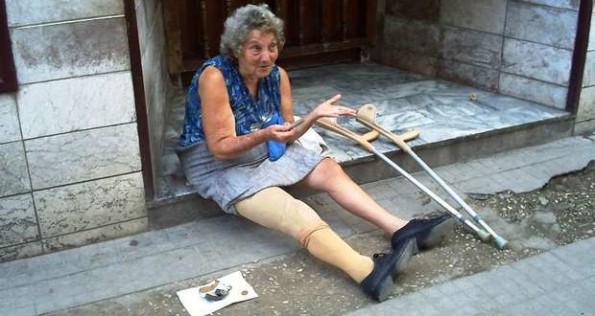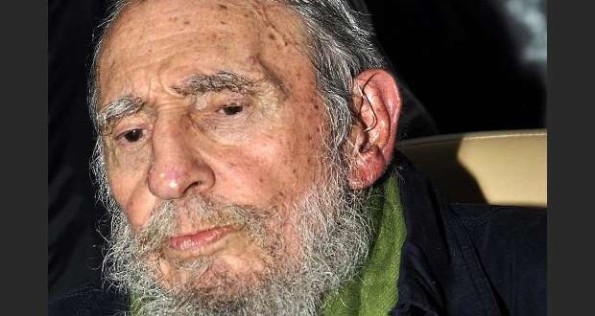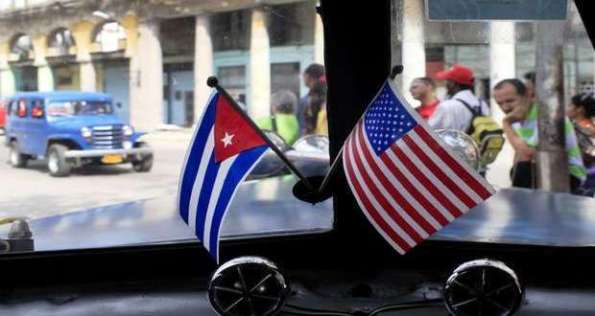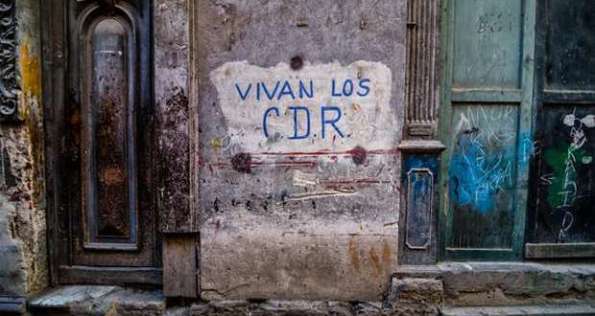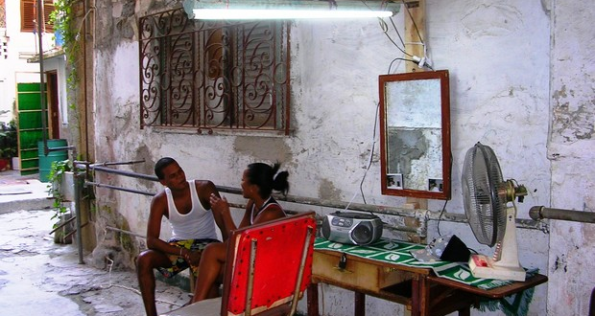 On December 17 Noemi and her coworkers at the telecommunications company ETECSA were surprised to hear their boss hastily reading “the day’s top news story” to their entire workforce in a tone of voice that was intended to sound solemn.
On December 17 Noemi and her coworkers at the telecommunications company ETECSA were surprised to hear their boss hastily reading “the day’s top news story” to their entire workforce in a tone of voice that was intended to sound solemn.
“Comrades, after the conclusion of agreements with President Obama, three of the five heroic Cuban prisoners unjustly incarcerated by the Empire are today en route back to their homeland. They are returning as was promised by our undefeated Comandante,” he said the business manager, barely taking a breath.
At noon later that day all the employees gathered around an ancient Chinese television to listen to the speech by General Raul Castro and to hear the news about the reestablishment of diplomatic relations with the United States after fifty-four years. continue reading
Although the news conference focused only on the return of the three imprisoned spies, ETESCA employees clandestinely copied onto flash drives online posts outlining the White House’s new direction for U.S. foreign policy, which is intended to help empower Cuba’s emerging civil society and small business sector.
The country’s military rulers reacted with astonishing indifference to Obama’s new strategy and executive actions as they relate to the embargo. The Castros live in a parallel universe.
They are not sure what to do with the ball at their feet. The best thing the Communist Party bureau that controls the news could do was to present a rosy portrait of the three espionage agents.
As the drama was quickly unfolding, it became clear that Obama was taking his landmark decision seriously. On Thursday, January 15 Washington announced a package of measures clearly intended to benefit ordinary people as well as Cuba’s emerging private business sector.
In this instance Noemi and her colleagues had to do their own searches for the information. “At first there was a sense of celebration over the return of the three spies, but not now. It’s not being talked about it. We had to secretly surf the internet and copy news articles that are important to Cubans,” she says during her lunch break.
There were no reports on the story on national radio and television news shows. By 1PM the top headlines were the new denominations of Cuban currency, the preparations for the January 28 torchlight march and, in international news, the annual United Nations’ water conference in Zaragoza, Spain.
Despite the poor media coverage, Osmin, who owns a candy store in the Santos Suarez neighborhood, was commenting on the good news with some clients by 2PM.
“I found out about it from a neighbor who has an illegal cable antenna. It’s unbelievable that the government still has not reported the news. I get the impression they are a bit disoriented, that it has not sunk in yet. These measures open the door to small business being able to secure credit, though it won’t be an option if they don’t authorize it,” he points out.
In a shopping mall at Puentes Grandes and 26th Avenue, four young men with garishly colored headphones around their necks are surfing the web in an internet cafe. Though engrossed in the match between Real Madrid and Atletico match for the Copa del Rey, they had heard the scoop.
“I think it’s great that the Americans have changed course and adopted a new strategy. Now we’ll see what our government has to say. It’s pointless to import information technology and cell phones if the state sells them at unaffordable prices,” says one of the young men.
His comment provokes a small debate. Osvaldo, a doctor who regularly goes online once a week to send emails to his son in Ecuador, thinks the government’s reaction is deceptive.
“The focus has been only on the release of the agents. Everything else, including the measures announced today, evokes more fear than joy. It’s not in tune with the average, ordinary citizen, who is usually optimistic about each new breakthrough. For fifty-four years the government has blamed all it failures on the United States. People need the government to provide its official version of events and outline the strategy it plans to follow,” says the Havana resident.
Josefa, a housewife, heard the news during a phone call from Miami at the time she heard about the birth of her grandson: “I was told they are thinking about revoking the airlines’ licenses. I hope this lowers the cost of a ticket. Flying from Havana to Miami is too expensive: 422 CUC for a flight that lasts less than an hour. To make this happen will require good will from the Cuban side. But I am afraid these people (the regime) are only interested in money and power.”
In a small park in Casino, a neighborhood in the Cerro district twenty-five minutes from central Havana, two friends kill time playing chess. “I heard about it at breakfast,” says one. “The government couldn’t care less about Obama’s policy; they will adopt only what suits them. And, apparently, they want to retain control of the economy, finance and people’s lives. As long as this caste of elders remains in power, nothing will change. The best thing about Obama’s policy is that it unmasks them.”
It remains to be seen whether the new measures adopted by the United States will be able to destroy the Castro regime’s potent blockade of economic autonomy and political freedom for its citizens.
A month after December 17 average Cubans are no longer quite so optimistic.
Ivan Garcia
Photo: A woman wearing clothes featuring the American flag walks through Havana. At one point such actions were prohibited, so Cubans often wore hats, shirts, shorts and leggings with American symbols cautiously. As of December 17, however, they are on open display in streets throughout the island. Source: Terra, EFE.
17 January 2015


